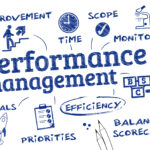
Wait times are a ubiquitous aspect of our daily lives, from standing in line at the grocery store to waiting for customer support on the phone. In various contexts, long wait times can lead to frustration, decreased customer satisfaction, and even financial losses for businesses. This article explores the significance of reducing wait times and provides strategies to enhance efficiency, benefiting both consumers and service providers.
Shorter wait times directly contribute to higher levels of customer satisfaction. Customers appreciate businesses that value their time and prioritize efficient service delivery. Reduced wait times also foster customer loyalty, making customers more likely to return and recommend the business to others.
Streamlining processes to minimize wait times improves overall operational efficiency. This optimization can lead to cost savings, increased productivity, and a competitive edge in the market. Long wait times can result in financial losses, especially in industries where customer turnover is crucial. Losses can be seen in a decrease in compacity, lower capture rates, and staff frustration. This efficiency creates creditability that your business is knowledge and experienced leading to a positive reputation.
Here are several strategies to overcome long wait times in your business. The first step is to analyze and streamline internal processes to eliminate bottlenecks. This can be accomplished through technology and automation such as online appointment scheduling, self-service kiosks, and providing paperwork before appointments to streamline customer interactions. These tools empower customers to manage their time effectively.
Well-trained staff can handle tasks more efficiently, reducing the overall time customers spend waiting. Implementing regular training programs can keep employees updated on the latest techniques and technologies. Additionally, adopting flexible staffing models that can adapt to peak hours or unexpected surges in demand and ensures that resources are appropriately allocated to meet customer needs. Use data analytics to identify patterns and trends related to wait times and use this information to guide strategic decision-making and help in proactively addressing potential issues.
Implementing intelligent queue management systems can optimize the flow of customers, minimizing wait times and improving the overall customer experience. Queue management systems keep customers informed about wait times and transparency builds trust by setting realistic expectations.
Reducing wait times is a critical aspect of delivering exceptional customer service and optimizing business operations. By implementing strategic measures such as workflow optimization, technology integration, and effective communication, businesses can create a positive and efficient customer experience. The benefits extend beyond customer satisfaction to include improved operational efficiency, financial gains, and a favorable reputation in the market. EyeAppoint can provide you a variety of tools to reduce wait times in your practice, learn more today!



